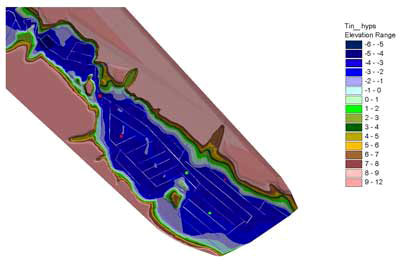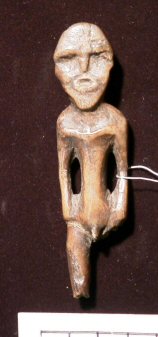
Figure 8: Serteya Valley, southern part (GIS 3-D projection)

Figure 8: Serteya Valley, southern part (GIS 3-D projection)
The sites belonging to the Middle and Later Neolithic are found in the southern part of the valley (Fig. 8). Their common feature is the occurrence of dwellings built on platforms supported by wooden piles (Fig. 9). The Middle Neolithic is exemplified by Usvyatian culture, first identified by Miklyaev on Usvyaty Lake, 50km further north-west. Its richly decorated organic-tempered pottery includes varieties with 'curvilinear' patterns (Fig. 10). Other elements of material culture are a variegated lithic industry, wooden implements, a human effigy (Fig. 11) and a flute (Fig. 12). The samples of wood from the various construction periods at Usvyaty IV yielded radiocarbon dates in the range of 5530-3920 BP uncal. or 4462-2200 cal. BC.

Figure 10: Usvyaty. Curvilinear pottery (Usvyaty 4 site)
Pile dwellings with Usvyatian material were identified at several sites in the central and southern parts of the Serteya valley: Serteya 2, 8, 10 and 11. These are large sites, with total areas varying between 300 and 1,000 sq.m. Three radiocarbon dates on wood samples from the Usvyatian layer at Serteya VIII show an average age of 4663±177 uncal. BP or 3375±169 cal. BC.

Figure 11: Usvyaty. Human effigy (Usvyaty 4 site)

Figure 12: Usvyaty. Flute (Usvyaty 4 site)
Deposits of the Usvyatian sites contain 40 species of mammals: elk, brown bear and boar being the most common, and also fur animals: marten, otter and squirrel. Judging by the age groups, the elk was hunted throughout the year. Pike and perch were the most common among the fish. At least 30 edible wild plants were identified in the deposits of pile-dwellings; hazel-nut and water chestnut (Trapa natans) were allegedly the main source of plant protein.
© Internet Archaeology/Author(s)
University of York legal statements | Terms and Conditions
| File last updated: Wed Dec 15 2004